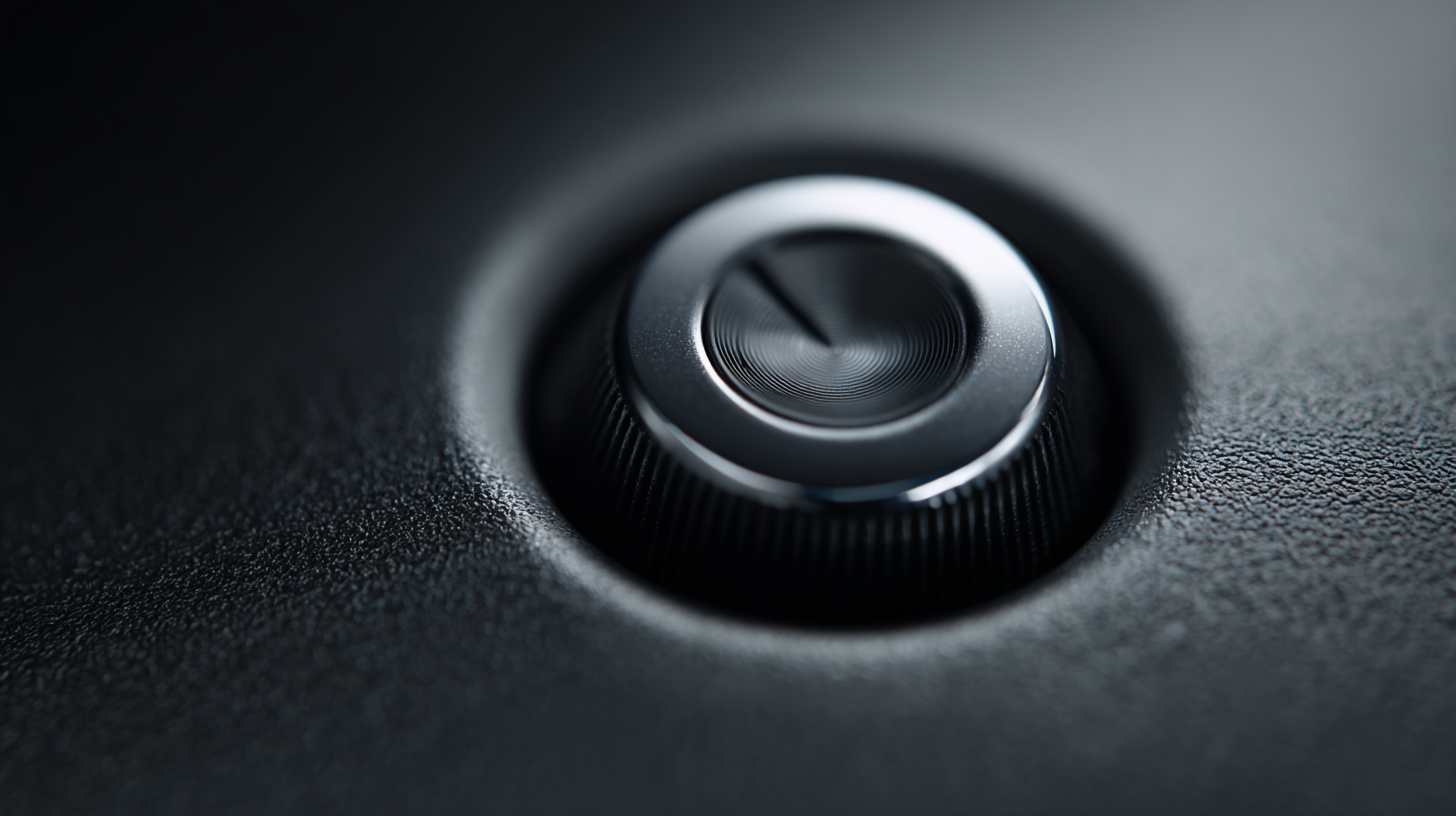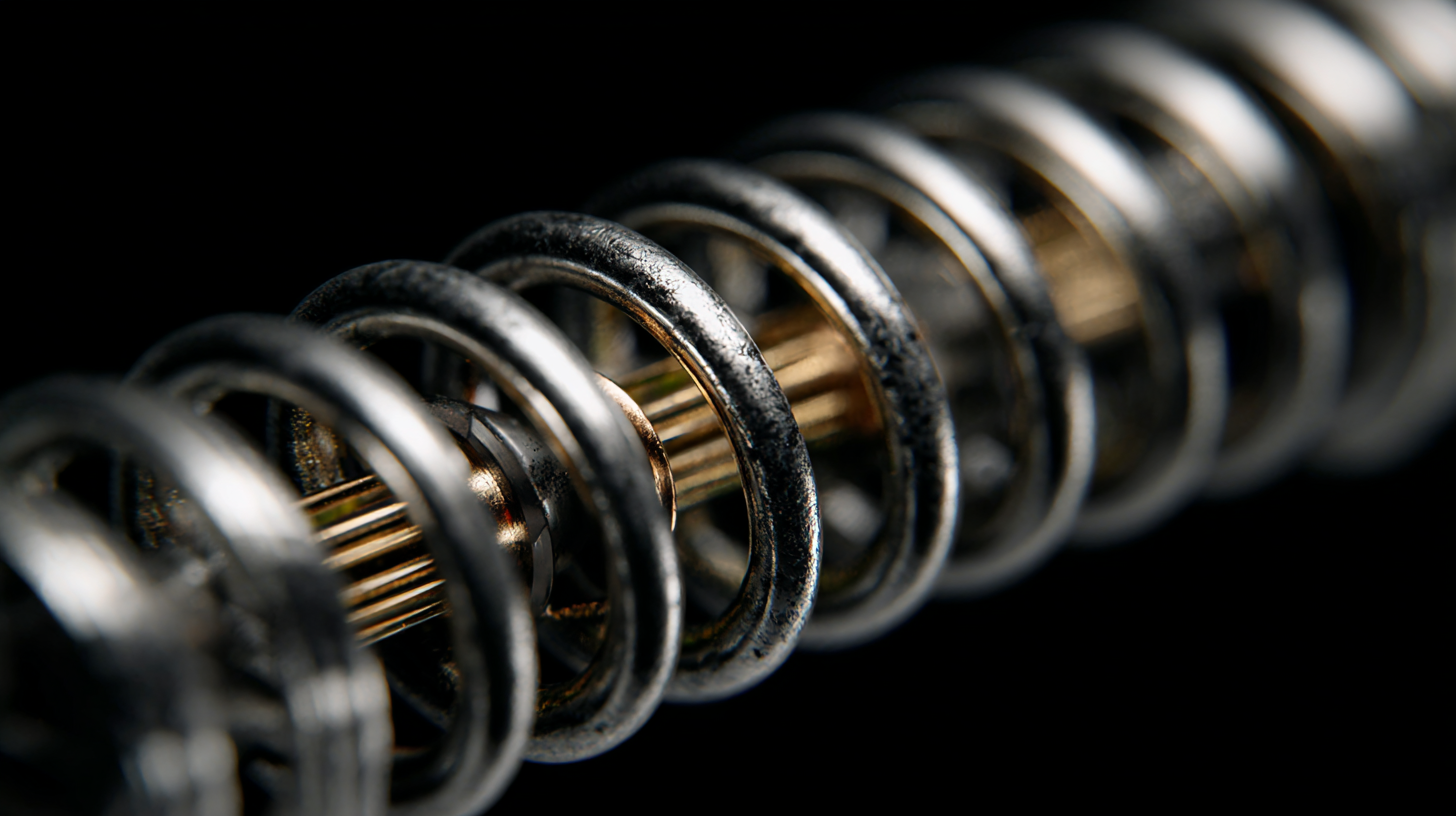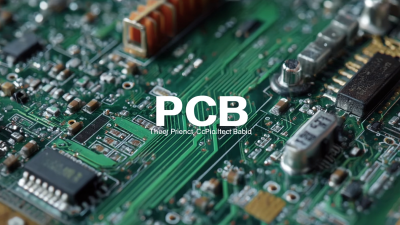Leave Your Message
In the ever-evolving landscape of modern technology, touch button springs play a pivotal role in enhancing device functionality and user experience. These innovative components are designed to provide tactile feedback, ensuring that users receive immediate physical responses upon interaction. By seamlessly integrating into various devices, touch button springs not only enhance the intuitive feel of buttons but also improve the reliability and efficiency of touch-sensitive applications. Understanding the science behind touch button springs allows us to appreciate their importance in the design of smartphones, home appliances, and a myriad of electronic gadgets. This introduction will explore the fundamental principles that govern the operation of touch button springs, the materials used in their construction, and how they have become essential in refining the human-device interface. As we delve deeper, we will uncover the mechanisms that make these springs indispensable in creating a more engaging and responsive technological environment.

In the world of user interface design, touch button springs play a crucial role in enhancing interactive experiences. These springs provide tactile feedback, a feature that significantly influences how users perceive and engage with a device. By offering a physical response to virtual commands, touch button springs can effectively bridge the gap between the digital and physical realms, fostering a sense of control and satisfaction. This feedback is essential, especially in devices where precision and comfort are critical, making interactions not only intuitive but also enjoyable.

Tips: When designing user interfaces, consider the placement and responsiveness of touch button springs. Ensuring they are positioned intuitively can significantly improve usability. Additionally, varying the resistance and feedback strength can cater to different user preferences, allowing for a more personalized experience.
Integrating touch button springs into device design also opens up opportunities for innovation. Designers can experiment with different materials and designs that enhance not only functionality but also aesthetics. A well-designed spring not only aids performance but can also elevate the overall look of the device, making it visually appealing while serving its purpose effectively.
Tips: Collaborate with engineers early in the design process to explore unique spring configurations. This collaboration can lead to groundbreaking designs that align with user expectations and set new standards in device interactivity.
The touch button spring mechanism has become a cornerstone of modern device functionality, significantly improving responsiveness in various applications. According to a report from MarketsandMarkets, the global tactile feedback technology market is expected to grow from $4.3 billion in 2021 to $8.2 billion by 2026, emphasizing the rising demand for responsive interfaces. The spring mechanisms used in touch buttons allow for a distinct tactile feedback, enhancing user experience by providing confirmation that an input has been registered without requiring a full mechanical click.

Furthermore, advanced spring technologies such as micro-electromechanical systems (MEMS) are revolutionizing touch interfaces. A study by IDTechEx highlights that MEMS-based touch sensors can reduce response times by up to 50% compared to traditional methods, greatly enhancing interaction speed. This improvement is crucial in sectors like consumer electronics and automotive interiors, where user expectations for immediate feedback continue to rise. By integrating sophisticated touch button spring systems, manufacturers can ensure that their devices not only meet but exceed consumer responsiveness standards, solidifying their place in the competitive tech landscape.
Touch button springs are crucial components in modern gadgets, providing tactile feedback and enhancing user experience. Different types of springs, such as metal coil springs, dome switches, and capacitive touch springs, offer distinct advantages depending on their application. Metal coil springs are often favored for their durability and consistent resistance, making them suitable for devices that require a robust and tactile response.
On the other hand, dome switches, commonly found in mobile devices and remote controls, provide a softer touch and can be designed for specific pressure profiles, enhancing the user interface.
Capacitive touch springs represent a more advanced technology, relying on electrical capacitance rather than mechanical motion. By detecting changes in electrical charge, these springs allow for sleek designs and improved responsiveness in smartphones and tablets.
Each type of touch button spring brings unique features to the table, enabling manufacturers to tailor their devices for optimal performance. The choice of technology can significantly influence the usability and functionality of modern gadgets, showing that even small components play a vital role in the overall user experience.
Touch button springs are essential components in modern electronics, significantly enhancing device functionality and user experience. These springs provide tactile feedback, which is crucial for user interface design. According to a report by Grand View Research, the global market for electronic components is expected to reach $2 trillion by 2025, with tactile and haptic feedback technology playing a pivotal role in this growth. Users prefer devices that incorporate these features because they offer a more engaging and intuitive interaction.
Incorporating touch button springs can improve device performance by ensuring reliability and consistency in user inputs. A study published in the Journal of Applied Mechanics highlights that devices utilizing touch feedback mechanisms can experience a reduction in user error rates by up to 40%. This aspect is particularly important in high-stakes environments where precision is critical, such as medical devices and automotive controls. By enhancing accuracy and providing satisfying tactile sensations, touch button springs are not just a luxury; they are a necessity for modern electronic devices seeking to elevate user engagement and satisfaction.
The rapid evolution of touch button springs in technology has significantly influenced the design and functionality of modern devices. These springs, which utilize a combination of material science and engineering, are becoming increasingly sophisticated. Innovations such as adaptive pressure sensitivity have allowed touch buttons to cater to diverse user interactions, making devices more intuitive and efficient. As manufacturers continue to explore the potential of these components, we can expect enhancements that will redefine user experience across an array of applications, from smartphones to smart home devices.
**Tips: To ensure you are maximizing the functionality of devices that utilize touch button springs, consider adjusting their settings for personal responsiveness. Regular maintenance and cleaning can also prolong their lifespan and performance.**
Future innovations may include the integration of haptic feedback technology, allowing users to receive tactile responses when interacting with touch buttons. This capability not only enhances usability but also provides a familiar feel that can turn abstract digital interactions into more tangible experiences. As researchers delve deeper into smart materials, we may soon see touch button springs that can change shape or size based on user preference or context, paving the way for the next generation of smart devices.
**Tips: Keep an eye out for updates from device manufacturers regarding new features that utilize advanced touch button springs. Engaging with product forums can provide insights into optimizing the user experience as technology evolves.**






